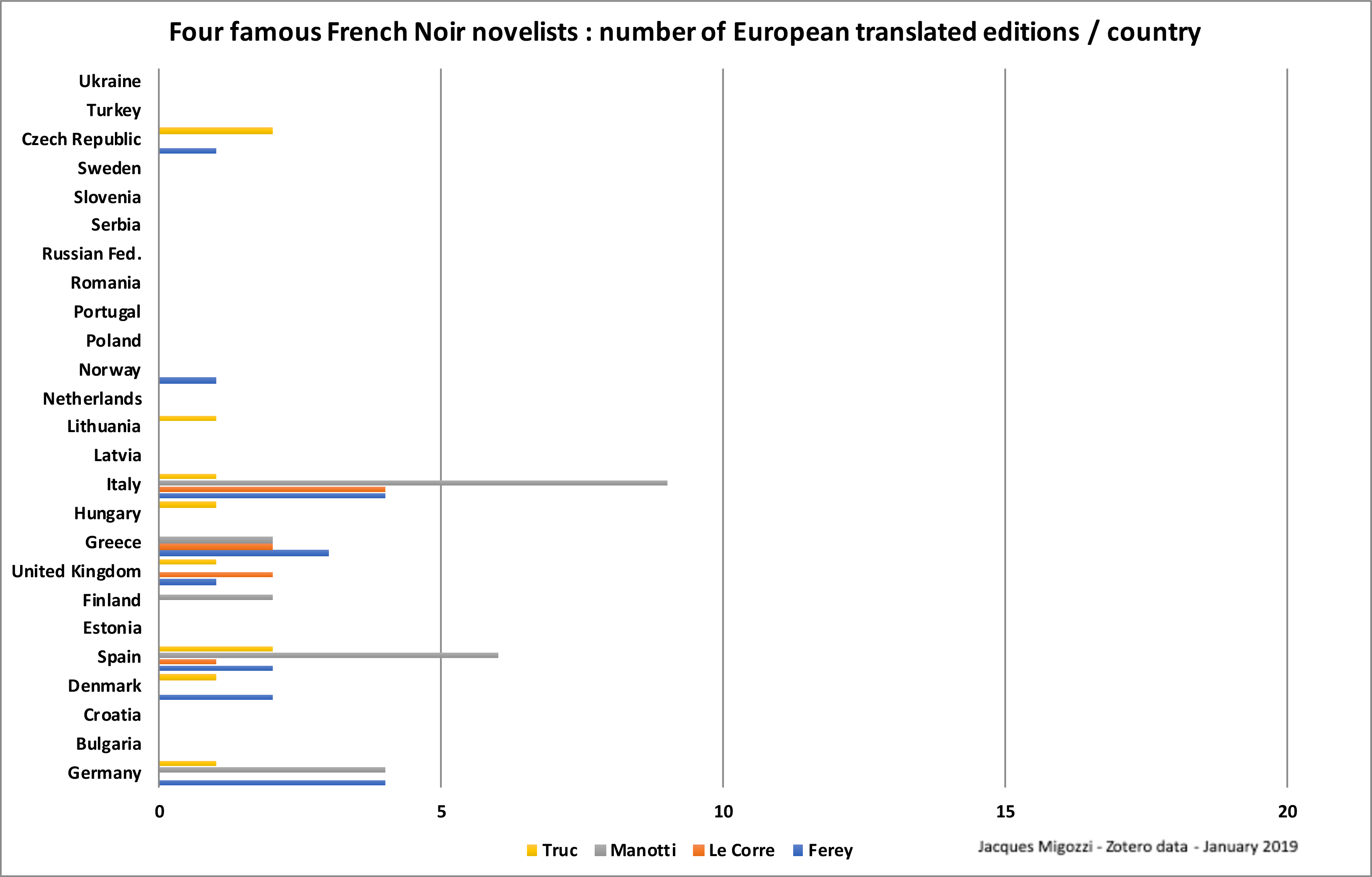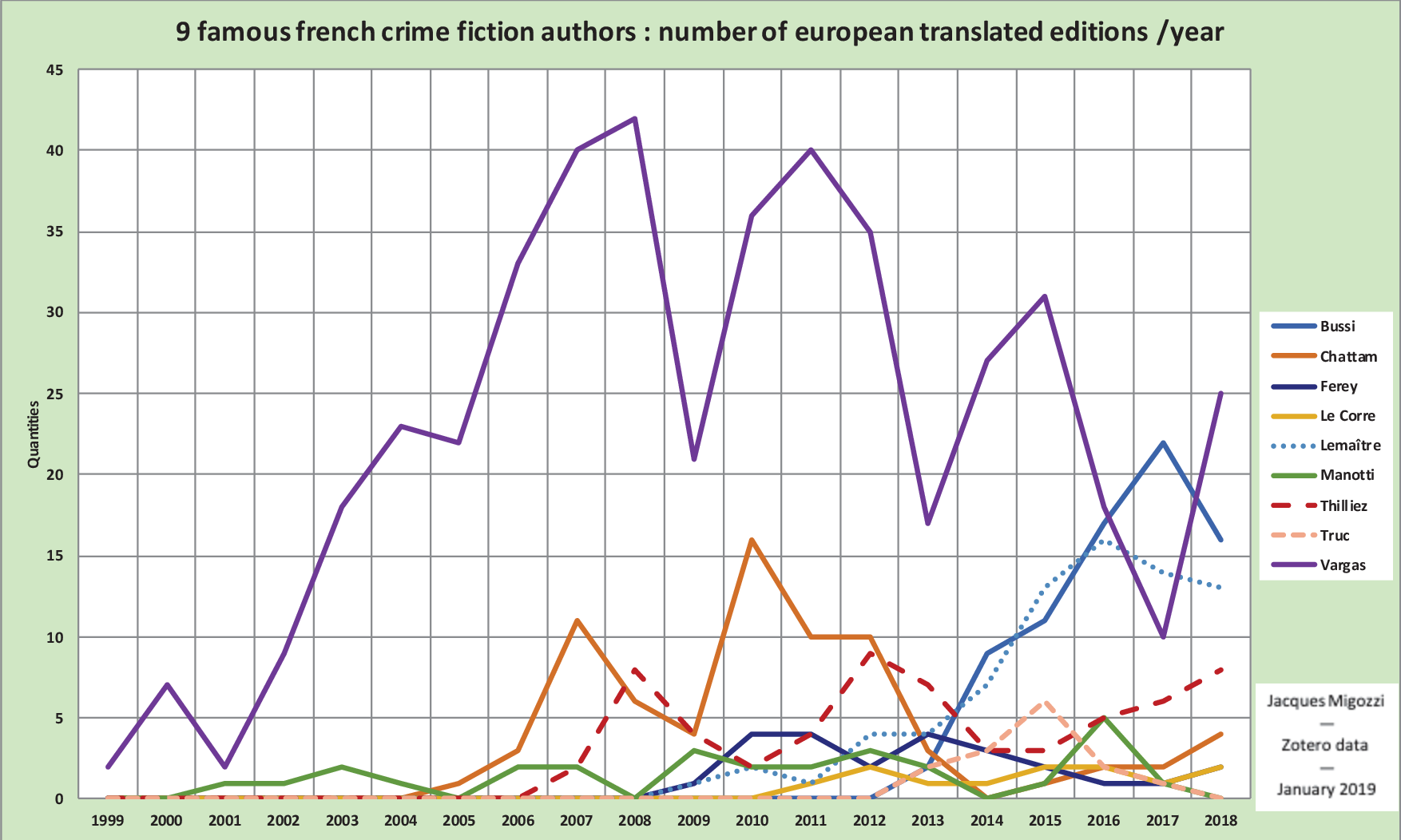

Jo Nesbø
Jo Nesbø (1960-) is the most successful contemporary Norwegian writer, author of crime fiction series translated all over the world. His series Harry Hole has been adapted into a film 2017. The political thriller TV series Occupied (TV2, 2015-) was based on an idea by Jo Nesbø.
The data visualised in this page refer to the transnational circulation of his literary works, detailing the number of translations of his novels and comparing them to those of other contemporary French and European crime writers.
The data in this map have been collected from the online catalogues of European national libraries using Zotero.
These graphs compare the translations of Jo Nesbø’s novels with those of ten French writers and nineteen European crime fiction authors whose work has been translated into several European countries.
The sample was selected to reflect a broad spectrum of countries, and to include authors from the same generation. The selection comprises three Spanish writers (Alicia Bartlett, Carlos Salem, Victor del Arbol), four Italians (Andrea Camilleri, Maurizio de Giovanni, Loriano Macchiavelli, Massimo Carlotto and Carlo Lucarelli), one Pole (Marek Krajewski), one Greek (Petros Markaris), three British (Ian Rankin, Philip Kerr, Graham Hurley) and one Irish (Ken Bruen), 4 Swedes (Henning Mankell, Stieg Larsson, Camilla Läckberg and Arne Dahl), one Icelandic (Arnaldur Indriason) and one Norwegian (Jo Nesbo).
For each of these writers, the graph visualises the number of entries archived on the European Library portal’s website by the 12/31/2016.
The dataset allows to compare, first of all, the number of entries for European editions in translation and, secondly, the number of European languages that each author was translated into. These two figures can be used as basic quantitative indicators of a book’s and a writer’s influence outside of their country of origin.






